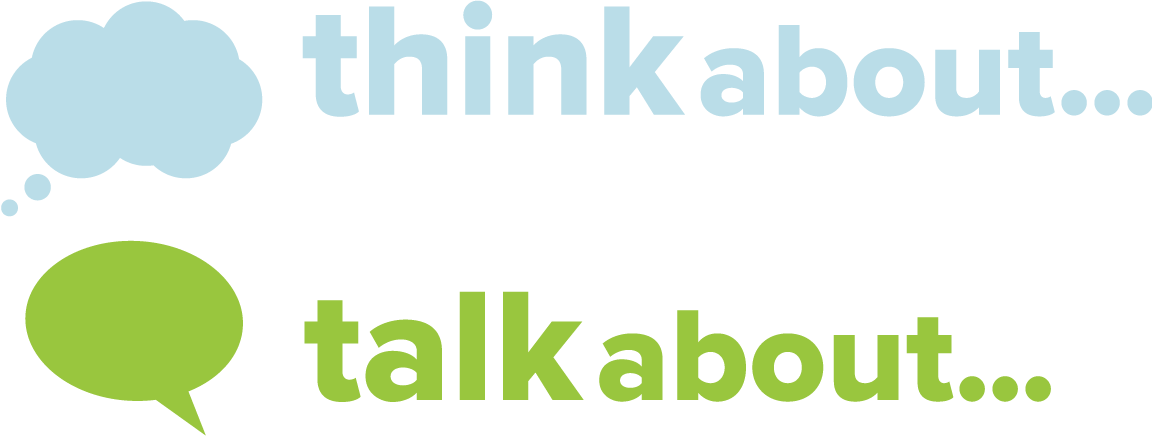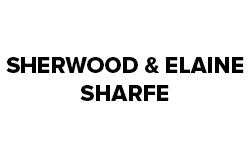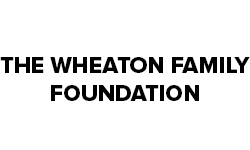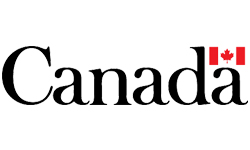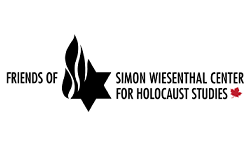Part B Learning Plan 30 – History, Native Studies, Social Studies
Inquiries are identified and connections to Big Ideas are noted. Teachers may begin with any inquiry or combine inquiries to use the approach that resonates best with their students.
What happens if we do nothing?
- What are the implications/consequences of engagement and non-engagement as citizens?
Big Ideas Explored:
- Action and in-action are choices and there may be reasons for and consequences to each choice when dealing with citizenship issues; and,
- There are means to reflect on your levels of action to measure and adjust your level of citizenship engagement.
Inquiry
What will you do to create positive change?
- Who benefits from the inequities of society?
Big Ideas Explored:
- There are challenges to creating equity in society where socio-economic differences are increasing;
- Factors that create and continue to reinforce the rich/poor divide are deeply ingrained and require a will and strategy to address;
- Cooperation is a strategy that has specific consequences and requires acceptance by members of the group; and,
- Conflict resolution strategies that create an atmosphere of respect for difference are possible to create.
Teachers are encouraged to use the Historical Thinking Concepts constructs in exploring any of the inquiries.
Historical Thinking Connections
Historical Significance: How do we decide what is important to learn about the past?
Primary Source Evidence: How do we know what we know about the past?
Cause and Consequence: Why do events happen and what are their impacts?
Historical Perspectives: How can we better understand the people of the past?
Ethical Dimension: How can history help us to live in the present?
Continuity and Change: How can we make sense of the complex flows of history?
Questions to Guide Inquiry
Essential questions and guiding questions are posed to support teachers as they facilitate students’ exploration of the inquiry. Teachers are encouraged to adjust the wording, omit, or add questions as they choose.
- What is social justice?
- Does everyone perceive social justice the same way?
- What are the factors that impact the perceptions of social justice issues?
- What can be done about injustice?
- What are the challenges of creating equity in society?
- How does the increasing socio-economic divide contribute to the challenges?
- What are the factors that create the rich/poor divide and how do we address it?
- Why do injustices exist?
- What makes us/society likely to resist change?
- What types of groups are resistant to change?
- What do these groups have in common?
- How would you go about changing the mindset and practices of those groups?
- What responsibility do individuals have to address injustices in society?
- What is injustice? How do we know it is injustice?
- Why do injustices exist in free and democratic societies?
- What can be done about injustice, and how do we decide which injustice to address?
- How can engaged citizens affect positive change?
- What impact does cooperation create in trying to address injustice and create change?
Surface additional questions that students have.
CONNECT TO TOPIC AND SURFACE STUDENTS’ THINKING ABOUT …
- Surface student thinking in response to the prompts or hook questions posed.
- Add questions from students; adjust the wording of questions as needed.
- Chart student thinking for later reflection.
Surface student thinking in response to the prompts or guiding questions posed below. Chart or record their thinking for later reflection.
This inquiry examines the levels of engagement in citizenship issues and considers why people make the choices they do to become engaged and how they become involved. Students also think about the consequences of non-engagement / involvement and consider the processes required to effect change when there is strong support to maintain the status quo.
Ideas are suggested here to support teachers new to the inquiry process. Teachers are invited to use their professional judgment to make adjustments to all suggestions to support student learning. Look for opportunities to connect current citizenship issues to the themes and questions posed.
Inquiry
What happens if we do nothing?
- What are the implications/consequences of engagement and non-engagement as citizens?
- Why would someone choose to “do nothing”?
- Is inaction an action? How does one/society address inaction?
- How involved / engaged should citizens be?
- What are indicators of engagement?
- e. Voting, volunteering, advocacy, lobbying, social media initiatives
- How does one / a citizen become involved in issues?
- How do you decide what is important? Worth your time?
See Further Investigation section Part C for additional ideas to explore voting, volunteering and advocacy.
- What are you involved in?
- How and why did students become involved?
- What might you like to become involved with?
Make a plan for engagement in any citizenship issue for the year and monitor your involvement in the issue throughout the year.
Look for patterns in the activities of student involvement and interest. Develop a class profile.
DEVELOPING UNDERSTANDING
Surface student thinking in response to the prompts or guiding questions posed. Chart or record their thinking for later reflection. Teachers may want to put student responses into a “Before, During, After” chart to note the changes in students’ thinking as a result of the inquiries.
Citizenship challenges are ongoing. Teachers are challenged to bring current issues into the classroom so that students can make citizenship connections.
- Does level of engagement indicate the health of a democracy? Explain your thinking.
- Does voting reflect engagement? Explain your thinking.
- What means of measuring civic engagement exist?
- What are the levers of power and strategies for making change? How does one activate those?
- Brainstorm responses with students and chart thinking.
- Measuring What Matters: Citizenship Domain. Sears, Alan. 2014 http://peopleforeducation.ca/measuring-what-matters/wpcontent/uploads/2014/12/MWM_CitizenshipPaper_FA.pdf
- Educating the “Good” Citizen: Political Choices and Pedagogical Goals. Westheimer and Kahne. : http://oldapsa.apsanet.org/imgtest/EducatingTheGoodCitizen.pdf
- Note the charts on citizenship engagement in the appendix
- Review the areas of involvement identified in Appendix C: Domains of Civic Involvement
- In what areas are students involved?
- Where might they like to extend their involvement?
- What do students see as the merits and detractors of measurement systems?
- What kind of measurement would students develop?
Essential Questions: Guiding Questions
What is social justice?
- Does everyone perceive social justice the same way?
- What are the factors that impact the perceptions of social justice issues?
What can be done about injustice?
- What are the challenges of creating equity in society?
- How does the increasing socio-economic divide contribute to the challenges?
- What are the factors that create the rich/poor divide and how do we address it?
Why do injustices exist?
- What makes us/society likely to resist change?
- What types of groups are resistant to change?
- What do these groups have in common?
- How would you go about changing the mindset and practices of those groups?
What responsibility do individuals have to address injustices in society?
- What is injustice? How do we know it is injustice?
- Why do injustices exist in free and democratic societies?
- What can be done about injustice, and how do we decide which injustice to address?
- How can engaged citizens affect positive change?
- What impact does cooperation create in trying to address injustice and create change?
Examining Canada’s history of Social Justice
This part of the inquiry has students research the history of social justice issues in Canada to find the themes that are raised in the essential and guiding questions.
Have students identify some issues they would like to research or choose from the suggestions.
What has been the history of:
- Decision-making in Canada
- Voting in Canada
- Development of Canada’s Multi-cultural policy
- Francophone struggle for recognition
- Immigration policies in Canada
- Indigenous Rights
- First Nations struggle:
- For self governance
- To have treaty responsibilities fulfilled in education, health, clean water, child welfare, housing, etc.
- Minimum wage levels in Canada
- Development of Canadian Wheat Board
- Welfare, Social Assistance programs
- Other
Within issues have students identify:
- Issue or problem
- History
- Stakeholders involved
- Stakeholders’ perspectives
- Decision Making process
- Primary decision-makers
- Who was left out of the decision-making process
- Outcomes and Impacts
- Historic
- Contemporary
- Systems Analysis
- What structures exist within the system to maintain inequities?
- Who is benefiting from the inequities?
- What resolution do you propose?
- Strategies required
Inquiry
What will you do to create positive change?
- Who benefits from the inequities of society?
- What are the challenges of creating equity in society where socio-economic differences are increasing;
- How is the health of a society measured?
- What conditions exist to maintain economic inequality?
- What is required to reach resolution?
- What conditions are required to address economic inequality?
- Examine the factors that are creating the rich/poor divide and consider means of addressing inequities; and,
- What makes us/society likely to resist change?
- What types of groups are resistant to change?
- What do these groups have in common?
- Consider the impact of cooperation.
- How does competition support society?
- What are the examples of such in history, contemporary society?
- How does cooperation support society?
- What are the examples of such in history, contemporary society?
- How does competition support society?
Surface and record additional student questions.
- What issues are you involved with?
- Why are they important to you?
- What are the issues that you feel should be changed?
Identify the issues and develop a plan for change.
APPLY AND EXTEND KNOWLEDGE
- Can all social justice issues be resolved satisfactorily?
- Choose a social justice issue and trace its history in Canada and abroad. Identify:
- History
- Stakeholders
- Issues
- Processes to involve all stakeholders
- Resolution
- Your evaluation of the effectiveness of the resolution
- Recommended Next Steps
- What is the history of addressing issues concerning the First Peoples of Canada – First Nations, Inuit, Métis?
- What is Canada’s history in allowing immigrants into this country?
- Choose a social justice issue and trace its history in Canada and abroad. Identify:
- Do citizens have an obligation to get involved in all social justice issues? What would be the criteria?
- What obligations does the Federal government and Opposition parties have to adopt the recommendations of the Truth and Reconciliation commission?
- Identify the issues for and against?
- How would you counsel the government? Opposition parties?
EVIDENCE OF LEARNING
- What do you think now about…?
- What has caused your thinking to change?
- What evidence supports your thinking?
- Why is this information important to know?
- How will you use this information?
What happens if we do nothing?
- What are the implications/consequences of engagement and non-engagement as citizens?
Inquiry
What will you do to create positive change?
- Who benefits from the inequities of society?
Essential Questions: Guiding Questions
- What is social justice?
- Does everyone perceive social justice the same way?
- What are the factors that impact the perceptions of social justice issues?
- What can be done about injustice?
- What are the challenges of creating equity in society?
- How does the increasing socio-economic divide contribute to the challenges?
- What are the factors that create the rich/poor divide and how do we address it?
- Why do injustices exist?
- What makes us/society likely to resist change?
- What types of groups are resistant to change?
- What do these groups have in common?
- How would you go about changing the mindset and practices of those groups?
- What responsibility do individuals have to address injustices in society?
- What is injustice? How do we know it is injustice?
- Why do injustices exist in free and democratic societies?
- What can be done about injustice, and how do we decide which injustice to address?
- How can engaged citizens affect positive change?
- What impact does cooperation create in trying to address injustice and create change?
- Injustices of today have roots in the past.
- Canadian society is challenged to manage the co-existence of diverse worldviews.
- Canadian citizens work to achieve a balance between rights and responsibilities through learning and action.
- Canadian society has inequities and elimination of these is beneficial for all Canadians.
- For each individual, becoming aware of racism in Canadian society is an evolutionary process and a precursor to change.
- As citizens of local, national, and global communities, Canadians are conscious, self-reflective, and critical of their own beliefs and actions and seek to make positive change.
- Citizens show flexibility of mind.
STUDENT CITIZENSHIP JOURNAL OPPORTUNITIES
Students are keeping a Citizenship Journal to reflect upon their developing views of citizenship. This section provides prompts for student journals. Students are invited to choose one that interests them or propose their own. Students can also respond to any of the essential questions.
Students are encouraged to respond using a variety of genres.
- What was your greatest surprise in learning that occurred in the inquiries? Why?
- Think of a social justice situation or area you are passionate about. What would be the conditions for social justice to be achieved? What can you do to make this happen? How would this impact you?
- How strong of a citizen connected to self, community, and place are you? Rate yourself using a scale of 1 – poor – 5 – very strong. Explain your thinking. What would it take for you to move 1 point higher on the scale? Are you willing to do that? Explain your thinking.
© 2024 Concentus Citizenship Education Foundation Inc. All Rights Reserved.

